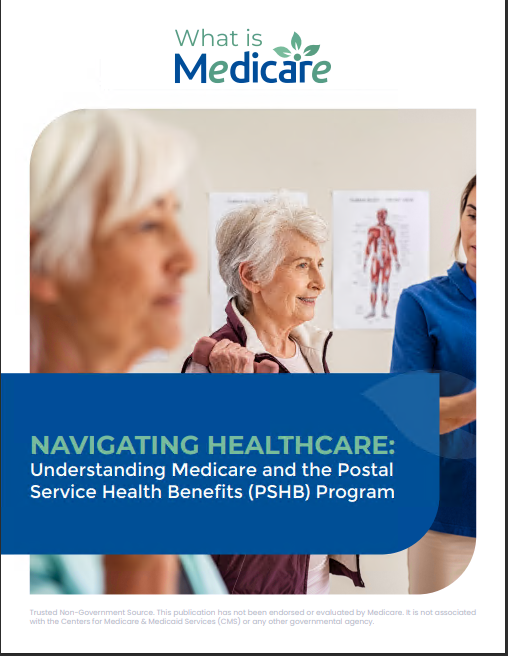Key Takeaways:
- Medicare Part B covers essential medical services, including doctor visits, outpatient care, and preventive services.
- Understanding what’s included and excluded can help you make the most of your Medicare Part B benefits.
Curious About Medicare Part B? Here’s the Full Breakdown!
As we navigate through the maze of healthcare options, understanding Medicare Part B can seem overwhelming. If you’re curious about what it covers, who’s eligible, and how it fits into your healthcare plan, you’re in the right place. Let’s break it down in simple terms.
What Exactly Is Medicare Part B?
Medicare Part B is a crucial component of Original Medicare, which primarily covers medically necessary services and preventive care. Unlike Medicare Part A, which deals with hospital insurance, Part B focuses on outpatient care, doctor visits, and other services you receive outside a hospital.
Part B is designed to cover:
- Doctor visits
- Outpatient medical services
- Preventive services like flu shots and screenings
- Durable medical equipment (DME) such as wheelchairs and walkers
- Mental health services
- Some home health care services
These services ensure that beneficiaries have access to necessary medical care without the need for hospitalization.
Who Can Get Medicare Part B?
Eligibility for Medicare Part B is generally straightforward. If you’re already receiving Social Security benefits, you’re likely automatically enrolled in Part B when you turn 65. However, if you’re not receiving Social Security benefits, you need to sign up for Part B during your initial enrollment period, which starts three months before your 65th birthday and ends three months after.
You can also qualify if:
- You’re under 65 but have certain disabilities
- You have End-Stage Renal Disease (ESRD)
- You have Amyotrophic Lateral Sclerosis (ALS)
For those delaying their enrollment because they have other health coverage, there’s a Special Enrollment Period (SEP) that allows you to sign up for Part B without penalty once that coverage ends.
What Medical Services Are Covered?
Medicare Part B covers a wide range of medical services that are essential for maintaining your health. Here’s a closer look:
Doctor Visits: Whether it’s a general practitioner or a specialist, Part B covers visits to physicians for check-ups, consultations, and treatments.
Outpatient Care: This includes various medical procedures and tests that do not require an overnight hospital stay, such as X-rays, MRIs, and minor surgeries.
Preventive Services: Part B is strong on prevention. It covers screenings for conditions like diabetes, cardiovascular disease, and certain cancers. It also includes vaccinations like flu shots, pneumococcal shots, and hepatitis B shots.
Durable Medical Equipment (DME): Items like blood sugar monitors, canes, crutches, and hospital beds fall under DME. These are essential for many patients to manage their health at home.
Mental Health Services: Coverage includes outpatient mental health services, such as counseling and therapy sessions.
Home Health Services: If you’re homebound, Part B covers certain types of care provided at home, including part-time skilled nursing care, physical therapy, and speech-language pathology services.
How Does Medicare Part B Work with Doctors and Hospitals?
When you receive medical care, Medicare Part B typically covers 80% of the Medicare-approved amount for covered services after you meet your annual deductible. You are responsible for the remaining 20%. This cost-sharing structure is known as coinsurance.
For instance, if you visit a doctor and the Medicare-approved cost of the visit is $100, Medicare will pay $80, and you’ll pay $20, provided you’ve met your deductible for the year.
It’s important to note that Medicare only covers services provided by healthcare professionals and facilities that accept Medicare. Before receiving treatment, confirm that your doctor or provider participates in Medicare to avoid unexpected costs.
What’s Not Included in Medicare Part B Coverage?
While Medicare Part B offers extensive coverage, there are certain services it doesn’t cover. Knowing these exclusions can help you avoid surprises and plan accordingly. Common exclusions include:
- Routine dental, vision, and hearing exams
- Cosmetic surgery
- Most prescription drugs (covered under Part D)
- Long-term care, such as nursing home care beyond a certain limit
- Acupuncture and other alternative therapies not considered medically necessary
- Health care received outside the United States (with some exceptions)
For services not covered by Part B, you may need to consider additional insurance, such as Medicare Advantage Plans (Part C) or supplemental insurance (Medigap).
How Much Does Medicare Part B Cost?
Medicare Part B isn’t free; it comes with a monthly premium, which most people pay out of their Social Security benefits. The standard premium amount for 2024 is $174.70 per month. However, this can be higher based on your income.
In addition to the monthly premium, you must pay an annual deductible, which is $240 for 2024. After meeting this deductible, you’ll typically pay 20% of the Medicare-approved amount for services.
Higher-income beneficiaries may also have to pay an Income-Related Monthly Adjustment Amount (IRMAA) in addition to the standard premium. This extra charge applies to individuals with higher adjusted gross incomes and is determined by the IRS.
When and How to Enroll in Medicare Part B
Enrolling in Medicare Part B is a crucial step in securing your healthcare coverage. Here’s how you can do it:
Initial Enrollment Period (IEP): This is the first chance to sign up, starting three months before you turn 65, including your birthday month, and ending three months after.
General Enrollment Period (GEP): If you miss your IEP, you can enroll during the GEP from January 1 to March 31 each year, with coverage starting July 1. Note that you may face a late enrollment penalty if you don’t sign up when first eligible.
Special Enrollment Period (SEP): If you’re covered under an employer group plan, you can enroll without penalty during a SEP when that coverage ends.
To enroll, you can:
- Visit the Social Security website
- Call Social Security at 1-800-772-1213
- Visit your local Social Security office
Tips for Making the Most of Your Medicare Part B Benefits
To maximize your Medicare Part B benefits, consider these practical tips:
-
Schedule Annual Wellness Visits: Take advantage of free annual wellness visits to discuss your health and preventive care with your doctor.
-
Stay Current with Preventive Services: Utilize covered screenings and vaccinations to catch potential health issues early.
-
Understand Your Costs: Know your deductible, coinsurance, and any premiums to budget for your healthcare expenses.
-
Check Provider Participation: Ensure your healthcare providers accept Medicare to avoid out-of-pocket costs.
-
Explore Additional Coverage: Look into supplemental insurance plans to cover services not included in Part B, like dental, vision, and hearing.
-
Keep Records: Maintain a detailed record of your medical visits, tests, and services to track your care and expenses.
Making the Most of Medicare Part B in 2024
Medicare Part B remains a cornerstone of healthcare coverage for many Americans in 2024. As healthcare needs evolve, staying informed about your benefits and how to use them effectively is crucial. By understanding what Part B covers, who’s eligible, and how to enroll, you can make informed decisions about your health care.
Contact Information:
Email: [email protected]
Phone: 6195558901










